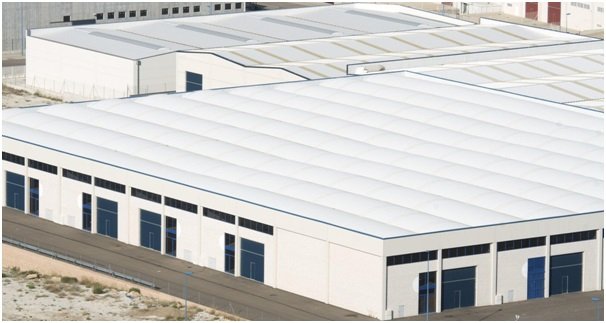When it comes to commercial roofing, selecting the right material is vital for your building’s durability and efficiency.
In the world of roofing, EPDM (Ethylene Propylene Diene Monomer) and TPO (Thermoplastic Olefin) systems stand out as popular choices. Each has its own set of perks and pitfalls, turning the decision-making process into a significant one for property owners and managers.
Join us in this article as we delve into the advantages and disadvantages of EPDM vs TPO roofing to empower you in making a well-informed choice for your building.
EPDM Roofing: A Closer Look
EPDM roofing is a synthetic rubber material that has been used for over 60 years in the commercial roofing industry. It’s known for its durability, flexibility, and resistance to extreme weather conditions.
Pros of EPDM Roofing
One of the biggest advantages of EPDM roofing is the following:
Cost-Effective
EPDM roofing is known for its cost-effectiveness. It is relatively inexpensive compared to other roofing materials, making it an attractive option for those with budget constraints.
Easy Installation
EPDM roofing is known for its straightforward installation process. Its lightweight nature and flexibility make it easy for contractors to handle and install, potentially reducing labor costs.
Durability
EPDM roofs have a proven track record of durability. They can withstand extreme weather conditions, including hail, high winds, and intense sunlight. This durability contributes to a longer lifespan for the roofing system.
Low Maintenance
EPDM requires minimal maintenance over its lifespan. Regular inspections and occasional cleaning are usually sufficient to keep the roof in good condition. This can be advantageous for property owners looking to minimize ongoing roof maintenance costs.
Energy Efficiency
EPDM roofing has reflective properties that can help regulate indoor temperatures. The reflective surface helps to reduce the absorption of heat, contributing to energy efficiency and potentially lowering cooling costs.
Cons of EPDM Roofing
While EPDM roofing has many benefits, there are also some potential downsides to consider:
Aesthetics
EPDM roofing is often criticized for its appearance. The black color of most EPDM roof membranes may not be visually appealing to some property owners, especially in commercial settings where aesthetics play a significant role.
Seam Issues
Seams are potential weak points in any roofing system, and EPDM is no exception. If not installed correctly, seams can be susceptible to leaks over time. Proper installation by experienced contractors is crucial to minimize this risk.
Limited Repair Options
While EPDM is durable, repairs can be challenging if the roof membrane is damaged. Patching or repairing a section of the roof may not always be as seamless as with other roofing materials.
TPO Roofing: A Detailed Overview
TPO (Thermoplastic Polyolefin) roofing is a popular alternative to EPDM due to its versatility, durability, and energy efficiency. TPO is a single-ply membrane made from a blend of rubber and plastic materials. It is commonly used in commercial roofing applications.
Pros of TPO Roofing
Thermoplastic Olefin (TPO) roofing has gained popularity in the roofing industry for commercial and residential buildings. Here are some of the pros of TPO roofing:
Energy Efficiency
TPO roofing is known for its energy-efficient properties. The white or light-colored membranes reflect sunlight, reducing the absorption of heat and helping to maintain lower indoor temperatures. This can lead to decreased cooling costs.
Aesthetics
TPO roofing is available in a variety of colors, providing property owners with more flexibility in terms of aesthetics. This can be particularly important in commercial settings where the visual appeal of the building plays a significant role.
Seam Strength
TPO roofing often features heat-welded seams, creating a strong and durable connection between sheets. This can enhance the overall strength of the roofing system and reduce the risk of leaks over time.
Resistance to Chemicals and Oils
TPO is resistant to chemical and oil exposure, making it suitable for buildings with specific industrial processes. This resistance contributes to the longevity of the roofing material in such environments.
Recyclable
TPO roofing is environmentally friendly as it is recyclable. At the end of its lifespan, the material can be recycled, reducing the environmental impact associated with disposal.
Cons of TPO Roofing
Like any roofing material, TPO has its drawbacks. Here are some cons associated with TPO roofing:
Durability Concerns
While TPO roofing is generally durable, some variations may be prone to premature aging and cracking. Choosing a reputable manufacturer and installer is crucial to ensuring the longevity of the roofing system.
Installation Challenges
The installation of TPO roofing can be more complex than EPDM. Proper installation requires skilled contractors to ensure seams are correctly heat-welded and the material is applied without defects.
Cost
TPO roofing is generally more expensive than EPDM. It offers energy efficiency benefits. They can lead to long-term savings. But, the cost may be a deciding factor for budget-conscious property owners.
EPDM vs TPO Roofing: Making the Right Choice
When it comes to choosing between EPDM vs TPO roofing for your commercial building, several factors should be considered. Your decision may depend on budget limits. It will also depend on your style and your property’s needs.
Budget Considerations
If cost is a primary concern, EPDM roofing may be the more suitable option. It is cheap and cost-effective. This makes it an attractive choice for owners with limited budgets.
Aesthetics
For those who prioritize the visual appeal of their building, TPO roofing offers more flexibility in terms of color options. The variety of colors available allows property owners to choose a roofing system that complements the overall design of the structure.
Energy Efficiency
Both EPDM and TPO roofing save energy. But, your building’s climate and energy goals may affect your choice. If cooling costs are a significant concern, TPO’s reflective properties may be advantageous.
Durability
Both roofing materials are durable. But, the conditions of your location and the skill of your installer can impact how long the roof lasts. Proper installation and regular roof maintenance are key factors in ensuring the durability of either EPDM or TPO roofing.
Choosing Between EPDM vs TPO Roofing
In conclusion, whether you opt for EPDM vs TPO roofing, it’s crucial to work with experienced contractors and reputable manufacturers to ensure proper installation and maximize the lifespan of your commercial roofing system.
The choice between EPDM and TPO roofing is big. By weighing the pros and cons of this article, you can make an informed choice. It should fit the unique needs of your building.
If you’re curious about our site and would like to know more, all you have to do is visit see for your selves.








